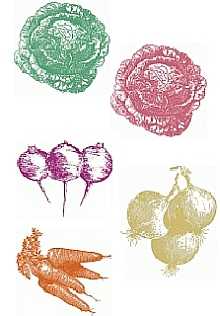
Copyright Vitality Foods Ltd 2011
Traditional lacto fermentation relies on naturally-occurring beneficial cultures, called lactobacilli*. These are similar to the cultures used to make yogurt and sourdough bread.
What is lacto fermentation?
Lactobacilli break down the sugars in fruit and vegetables and produce lactic acid, which acts as a natural preservative.
First, the fresh, nutrient-rich fruit or vegetables are washed and cut. They are then mixed with a small amount of sea salt. The purpose of the salt is to:
The mixture is packed into air-tight fermentation vessels and placed in a warm place to ferment. Once the initial fermentation is finished, the products are stored at a low temperature for a period of maturation.
Read more about how to control the lacto fermentation process.
The process
- Draw out the juices
- Preserve the fruit or vegetables while the fermentation gets started
- Help to regulate the fermentation process
If the process is correctly controlled, the final products are stable and safe, and can be stored in a cool, dark place for an almost unlimited time.
* The term "lacto" is used to describe a broad family of friendly bacteria which transform sugars into lactic acid. Some of these bacteria are specific to milk, and others to vegetables. Lacto fermented vegetables made with our starters do not contain milk or milk by-products.
Lacto fermentation is an ancient method of food preservation.

Preserving tradition with technology
Vitality Foods

Lacto fermentation
